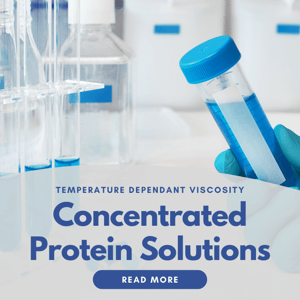
Calculating Activation Energy with Arrhenius
Application Note Download
Extracting activation energy from temperature dependent viscosity data is one characterization tool to quantify protein-protein interactions of concentrated protein formulations. The activation energy of these solutions reflects the dynamics of protein clusters and aggregates. It can be used to rank different buffer formulations based on their risk for large protein cluster or aggregate formation.
Activation energy (Ea) can be determined using the Arrhenius equation to determine the extent to which proteins clustered and aggregated in solution. The activation energy derived from the Arrhenius model can be a useful tool to rank a formulations’ performance. Activation energy quantifies protein-protein interactions (PPI). An increase in activation energy implies that motion between proteins sliding past each other is hindered and that there is a reduction in exchange of proteins between protein clusters. In this application note, we walk you through how to determine activation energy using the Arrhenius equation on data collected on the VROC® initium one plus automatic viscometer.

.jpeg?width=300&name=Woman%20scientist%2c%20documents%20and%20hands%20writing%20_575258496-min(1).jpeg)


.png?width=200&height=58&name=RheoSense%20Logo%20(REGISTERED).png)



